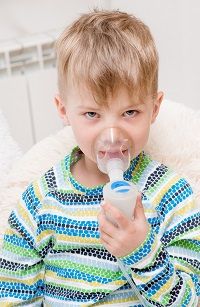Little Consistency in Intensive Treatment for Pediatric Asthma Across Hospitals
A recent survey of asthma treatment in intensive care units of children's hospitals in the US reveals wide variability between institutions in both medication and ventilation interventions.

A recent survey of asthma treatment in intensive care units of children's hospitals in the US reveals wide variability between institutions in both medication and ventilation interventions.
"For PICU admissions, use of all medications and respiratory support measures varied widely across hospitals," study lead Meredith Dilley, MD, and colleagues reported, "highlighting the lack of uniformity in approaching critically ill patients with asthma."
The survey distributed to 43 free-standing US children's hospitals elicited treatment details for patients 6 to 11 years of age admitted to pediatric intensive care unit (PICU) for acute asthma exacerbation or status asthmaticus and discharged between January 2010 to December 2014. Analysis, conducted on 5,330 PICU admissions for 40 hospitals, focused on medications beyond such standard front-line therapies as short-acting beta2-agonists, corticosteroids and oxygen, as the investigators considered these to be widely accepted and used in the management of moderate to severe asthma exacerbations.
Deriving Intraclass Correlation Coefficients (ICC) across hospitals for the interventions that were employed for patients unresponsive to frontline therapies, the investigators found a range in variability from the inconsistent use of magnesium sulfate (ICC of 0.14) to the relatively consistent, albeit infrequent, use of helium-oxygen (ICC 0.71). Ipratropium bromide and magnesium sulfate were found to be the most common treatments. Terbutaline was used less frequently than both ipratropium bromide and magnesium sulfate, and helium-oxygen was least frequently used.
"Given the level of acuity of patients who are admitted to the PICU with the highest potential for morbidity and mortality, this analysis highlights the need for more evidence-based standardized approaches to treatment," Dilley and colleagues indicated.
The work, entitled “Comparison of Treatment Modalities for Inpatient Asthma Exacerbations among US Pediatric Hospitals,” was conducted by Dilley and colleagues at Boston Children's Hospital and Harvard Medical School and published online November 22nd in the Journal of Allergy and Clinical Immunology in Practice.
Related Coverage:
Healthcare Employees Have Highest Asthma Rates
Children with Hard-to-Control Asthma Require Specific Tailored Treatment
Asthmatics with Elevated Eosinophil Levels Far More Likely to Require Hospital Admission